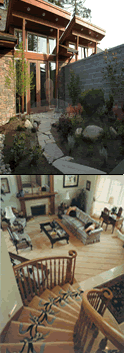A guide to servicing residential central air conditioning systems
By: Editor
Website: https://www.all-homeinteriordesigns.com
The economical operation and dependability of a system depend on proper servicing. Check for leaks, proper refrigerant charge, and malfunctioning refrigerant controls and motor control. Check also for moisture in the system. Some system use service valves. Often the same blower, motor, filter, and duct system are used during both the cooling and heating season.
It is essential that the blower be cleaned once a year. The motor should be lubricated (a few drops of SAE 30 oil) once or twice a year. The filter should be replaced or cleaned at lease twice a year. This should be done at beginning of heating season and beginning of cooling season.
The motor blower speed should be increased for summer comfort cooling. Belts on belt-driven blowers should be inspected and replaced if glazed or cracked. The condensing unit should be cleaned once a year. The condenser, especially, should be blown clean of lint and any bent fins straightened. A carbon dioxide blower or a vacuum cleaner may be used for cleaning the unit. The A-type evaporator should be cleaned of any lint. Check condensate drainage. Condensate that escapes the drain pan may drip on the furnace heat exchanger, corroding rusting it.
The best way to clean theses coils is as follow
- Remove the coil.
- Plug all connections at once.
Then either steam-clean or use hot water and detergent to scrub the fins and tubes.
Steam is the best cleaner, although high-pressure warm water and detergent does a fair job.
Do not adjust the thermostat too low for summer cooling. The evaporator may freeze the condensate. This will stop airflow through the evaporator. The evaporator may continue to collect a lot of ice.
There may be several reasons for service calls
- No heat or insufficient heating.
- No cooling or insufficient heating.
- Relative humidity too high.
- Air in house is stuffy.
Troubleshooting procedure
One of the key requirements for a service technician is the ability to follow a standard procedure. An example of a standard procedure follows:
- Obtain a description of the problem from the owner.
- From the problem description, determine the possible cause.
- Identify a specific remedy for the problem.
Using such a standard procedure will save time, money, and frustration. By following the same sequence of activities, you will become more efficient through repetitive use of your skills. Whenever possible, obtain a service manual or troubleshooting chart. The company whose equipment is being serviced should write manuals or charts. Each system has its own unique features, and consequently, its own problems.
|


